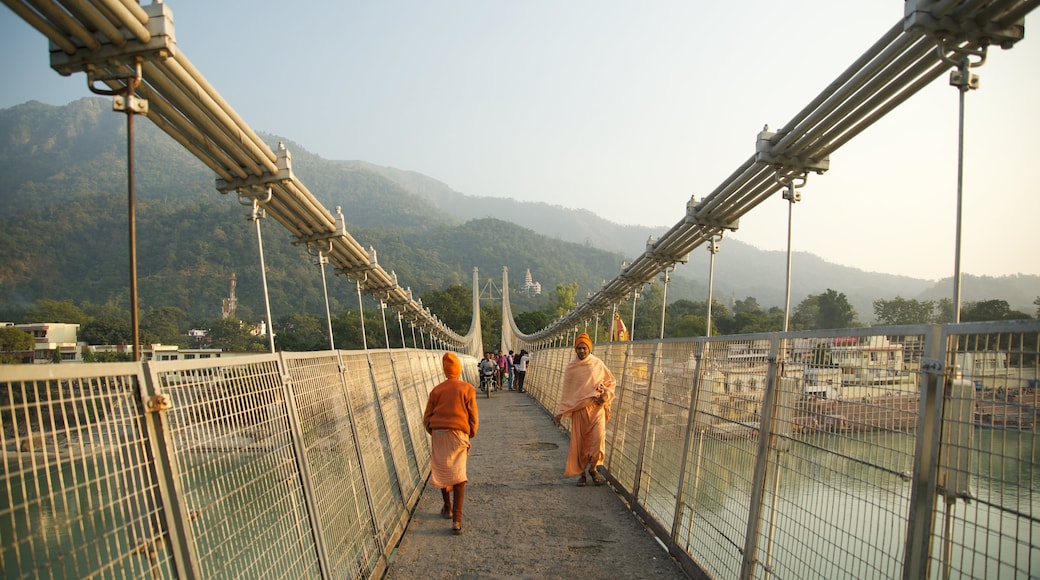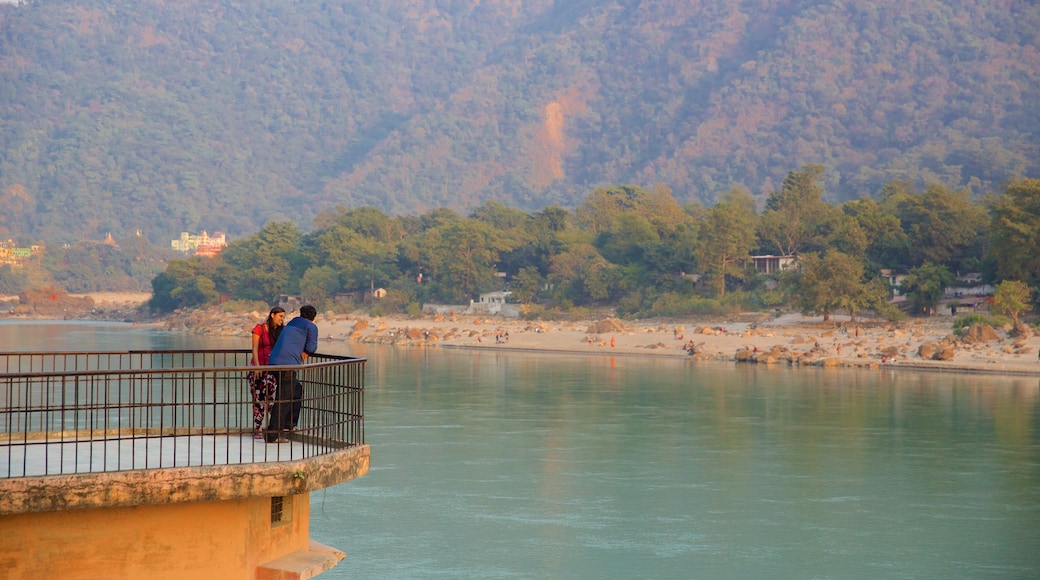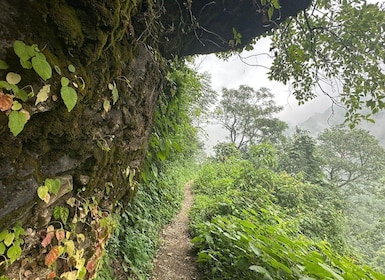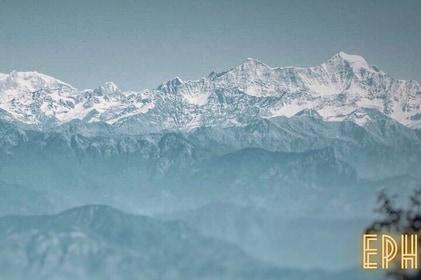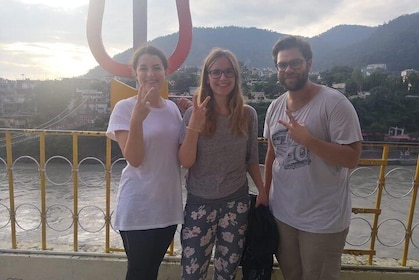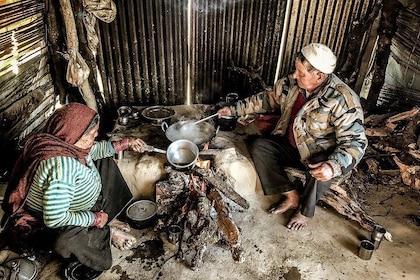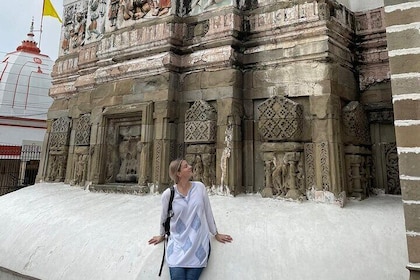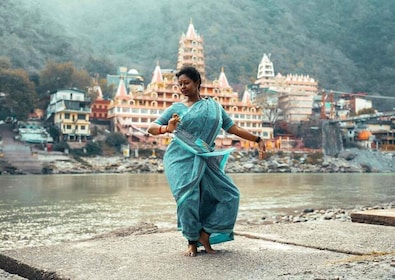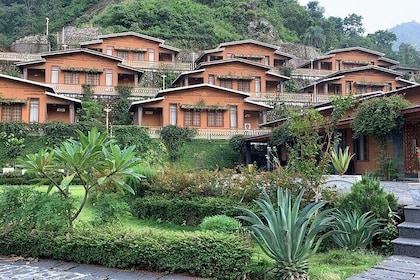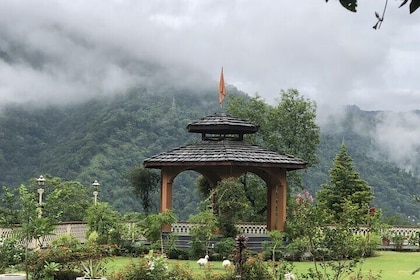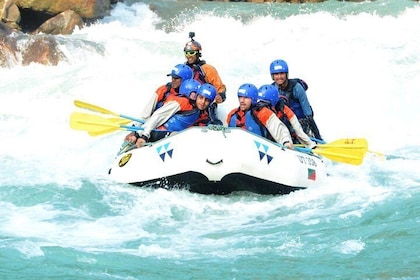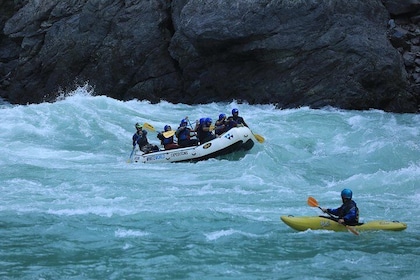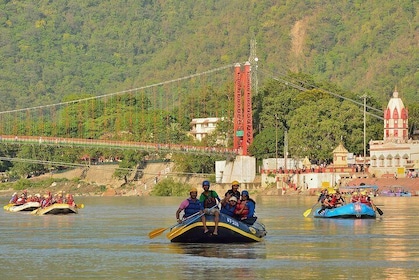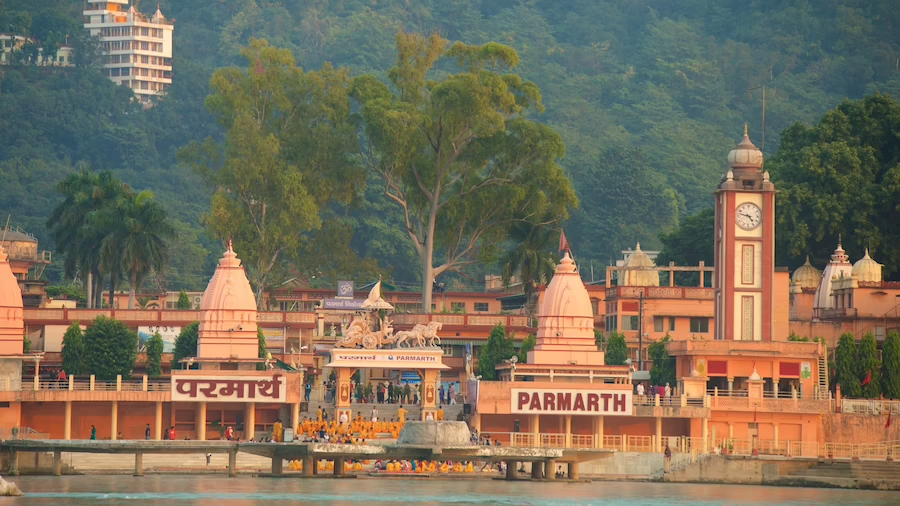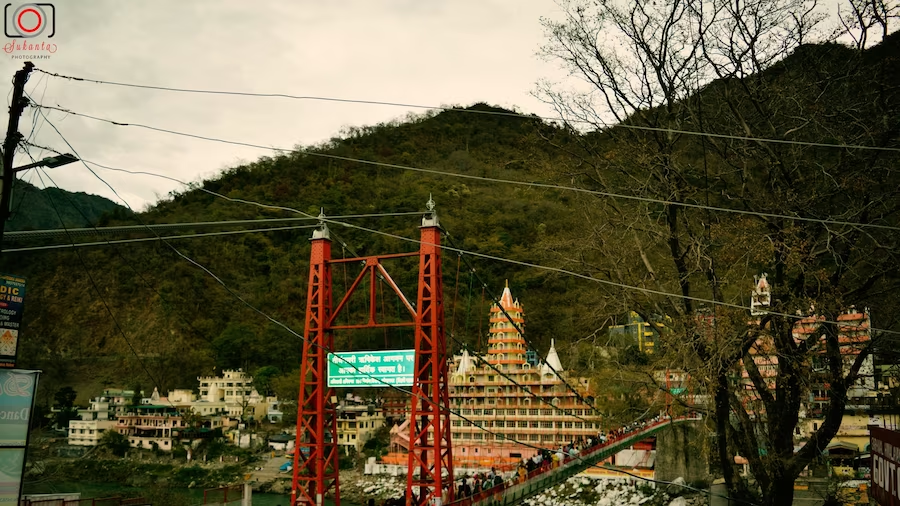The longer of two suspension bridges in Rishikesh offers great views of the river and features lively markets at both sides.
Stand at the center of the Ram Jhula and hold on tight to the railing as the whole bridge sways in the wind. Join the crowds as they potter between market stalls and sit back and unwind beside the sacred waters of the Ganges.
Although built later than the Lakshman Jhula, in 1980, this bridge is extremely similar both in its steel construction and design. Positioned a couple of miles downstream of Lakshman, the Ram Jhula connects the district of Sivananda Ashram on the eastern bank with Swarg Ashram to the west.
Stroll across the bridge and take in the scenery from this superb vantage point. Watch the fast water as it winds its way through the valley and see boats and rafters pass by beneath you. When the water is not moving too violently you will notice children splashing around and swimming in the shallows. Be sure to come on a breezy day when you can enjoy the bizarre sensation of the whole bridge swaying and shaking beneath your feet.
If this has made your knees feel a bit weak grab a seat and relax at one of the cafés on the banks of the river. Indulge in a refreshing drink and watch as locals and visitors bustle their way across the narrow bridge.
While you are in the area take the opportunity to explore the markets that are set up close to the bridge. Try traditional food and peruse precious stones, clothing and exquisite handmade jewelry.
Ram Jhula is located near Muni Ki Reti, approximately 4 miles (6 kilometers) north of Rishikesh. The bridge is mainly used by pedestrians however, it is also open to motorbikes and is popular with the local monkeys.
